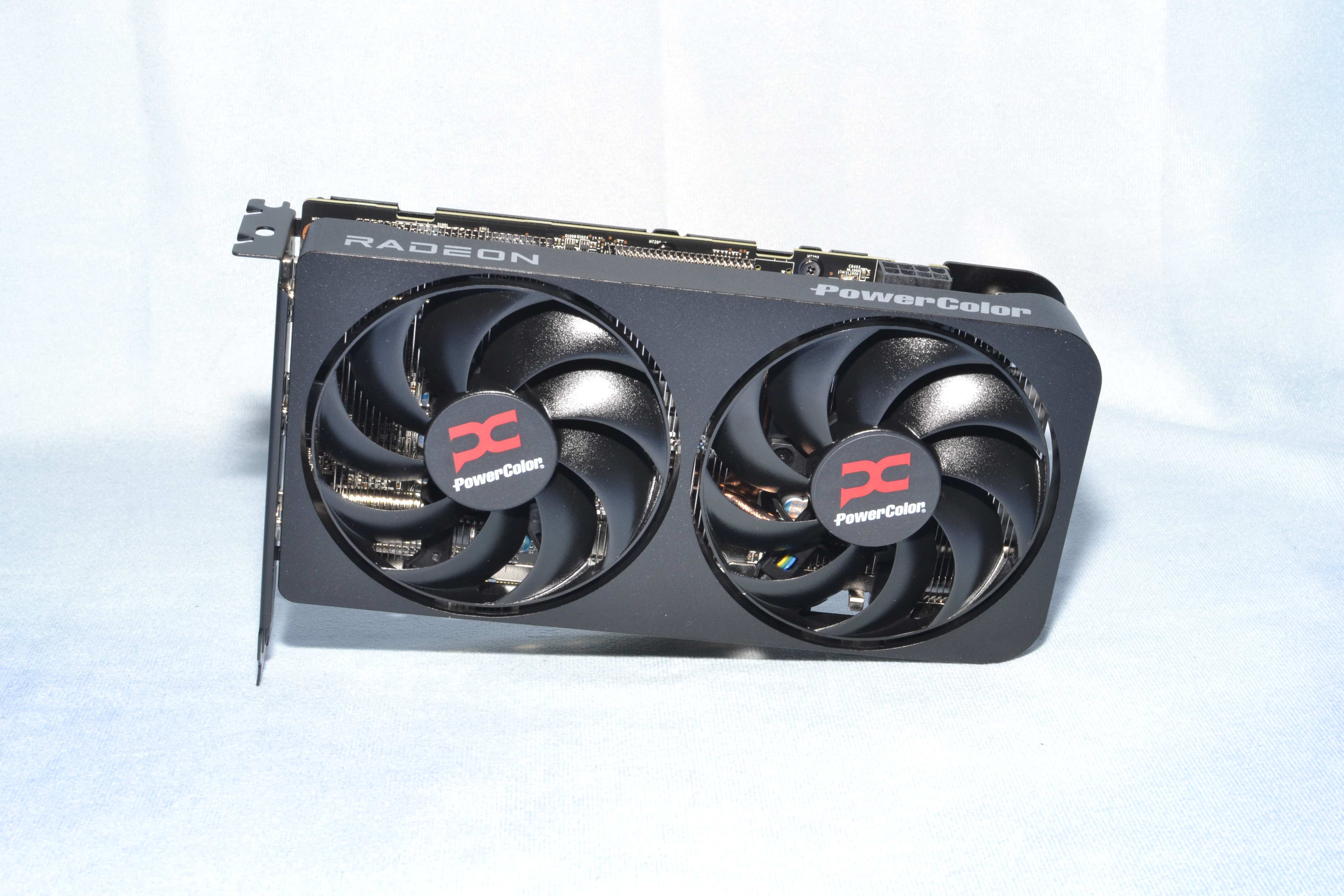Why you can trust Tom's Hardware
[Card Image]
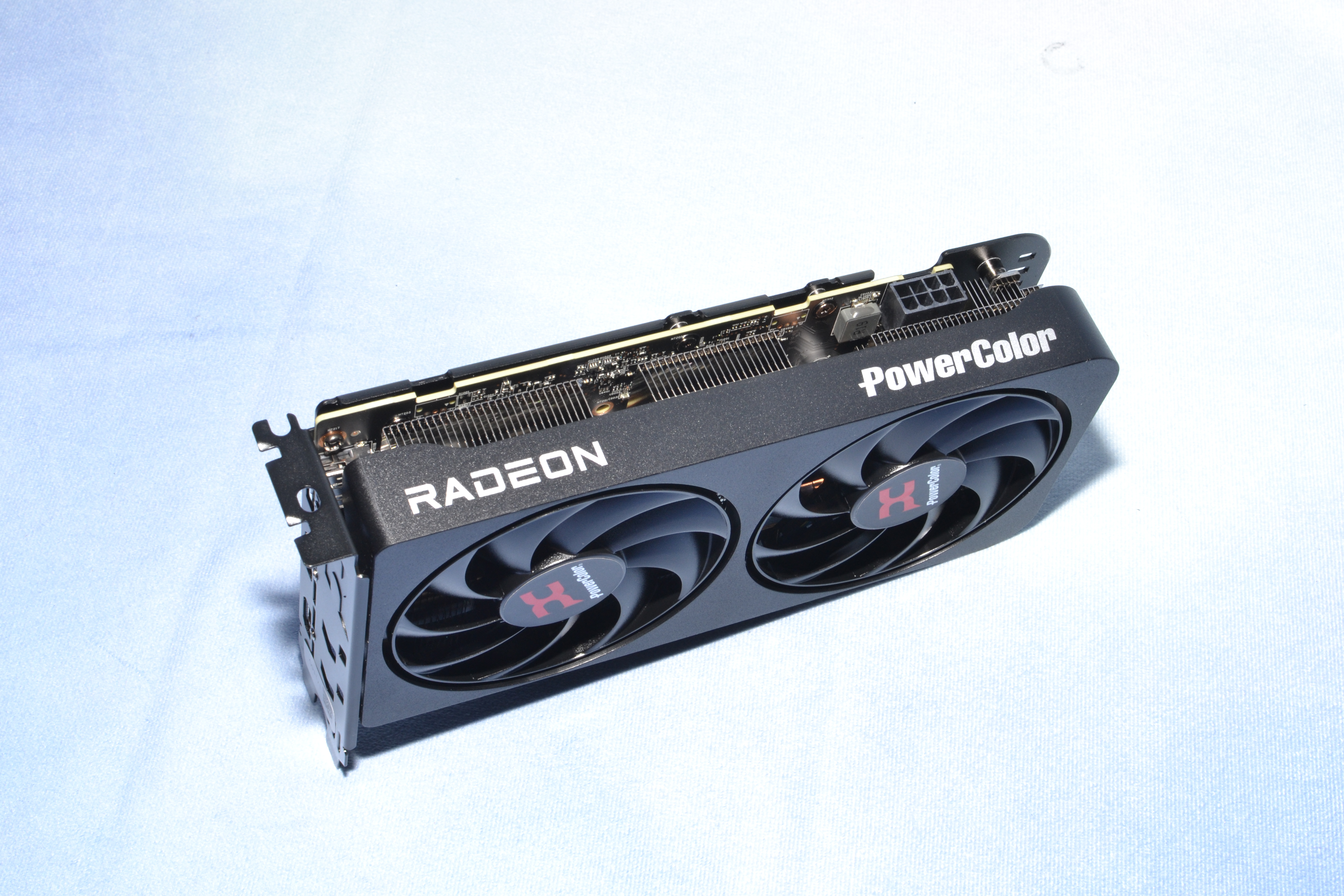
All our gaming tests are conducted using an Nvidia PCAT v2 device, which allows us to capture total graphics card power, GPU clocks, GPU temperatures, and some other data as we run each gaming benchmark. We have separate 1080p, 1440p, and 4K results for each area, which we'll order from highest to lowest resolution for these tests.
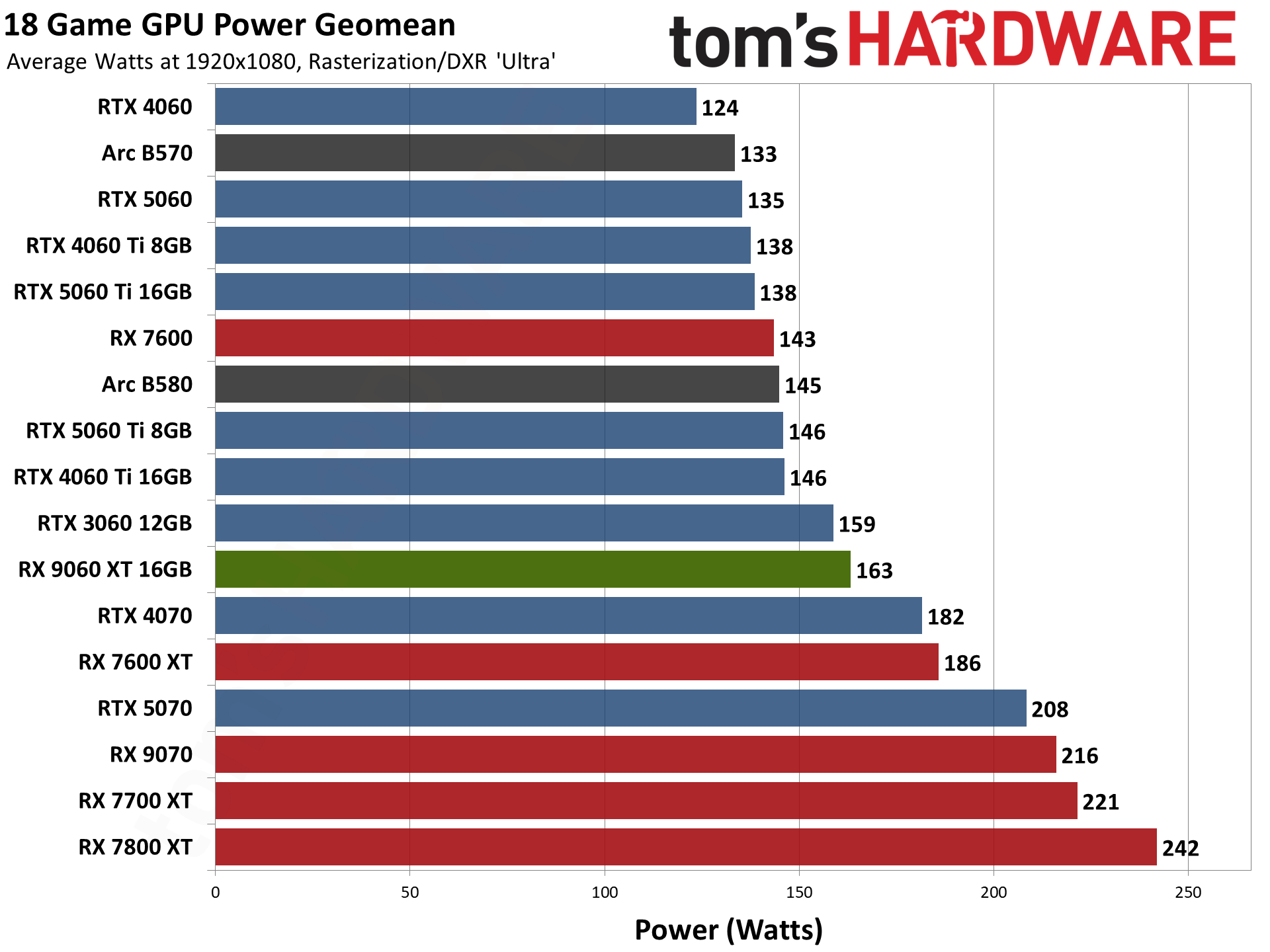

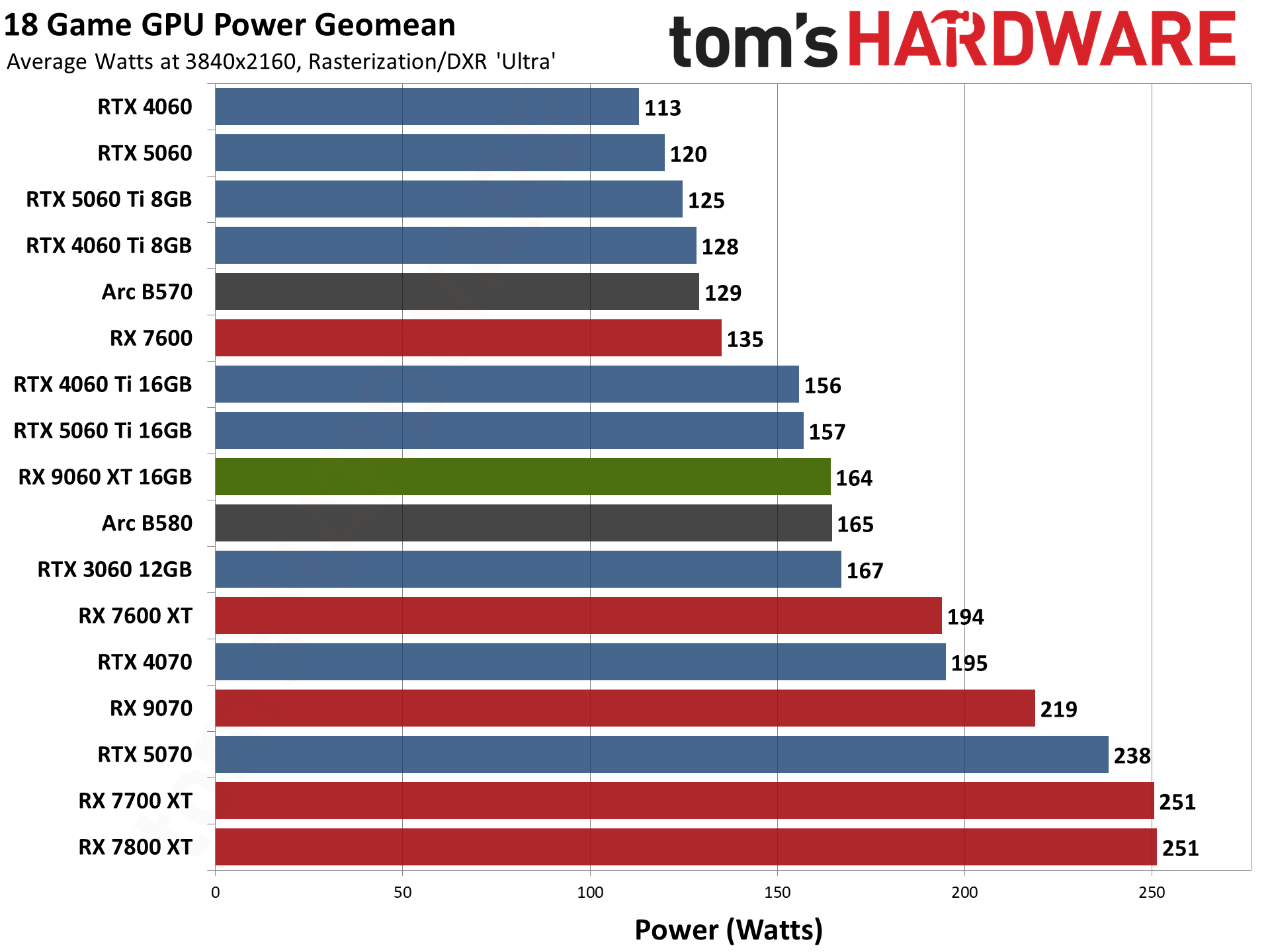
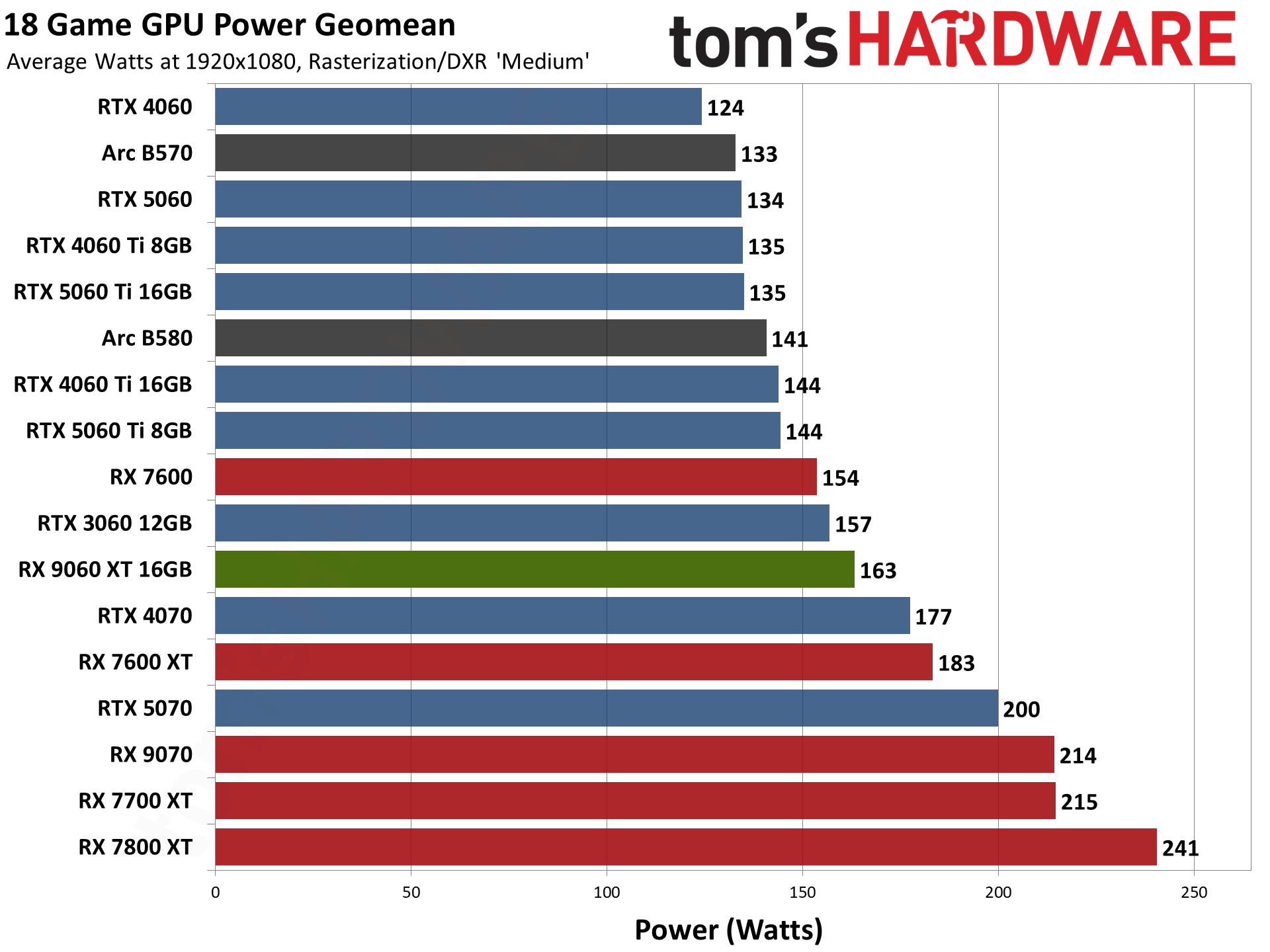
AMD officially rates the RX 9060 XT 16GB card as having a 160W TBP (Total Board Power), and the PowerColor Reaper card pretty much nails that figure. It’s actually fractionally above that mark, with 163W at 1080p, and 164W at 1440p and 4K.
Nvidia’s GPUs, in contrast, have different power ratings. The RTX 5060, for example, has a 145W TGB (Total Graphics Power), while the RTX 5060 Ti has a 180W TGP. All three 5060-class Nvidia GPUs come in well below their respective TGP ratings.
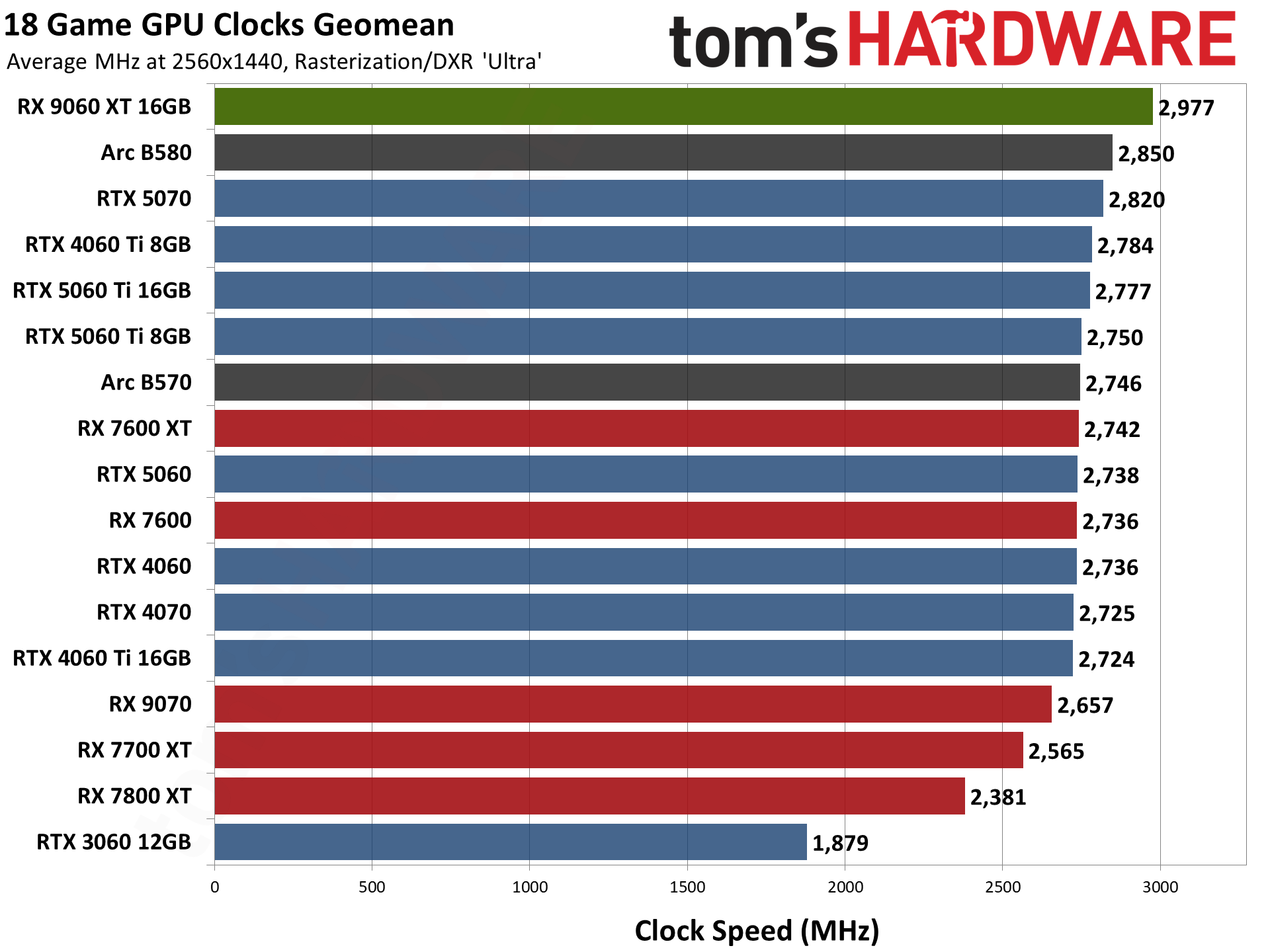
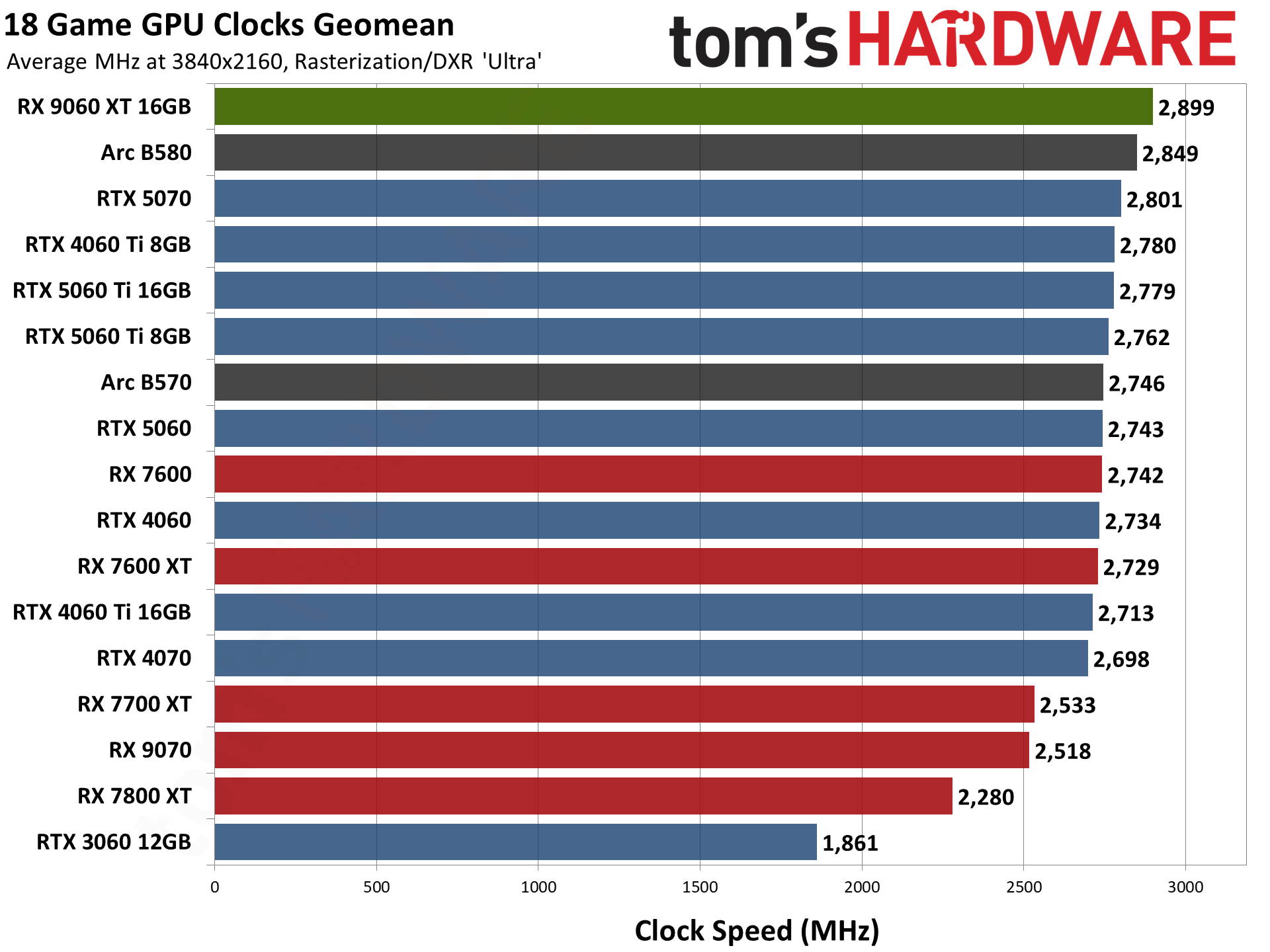
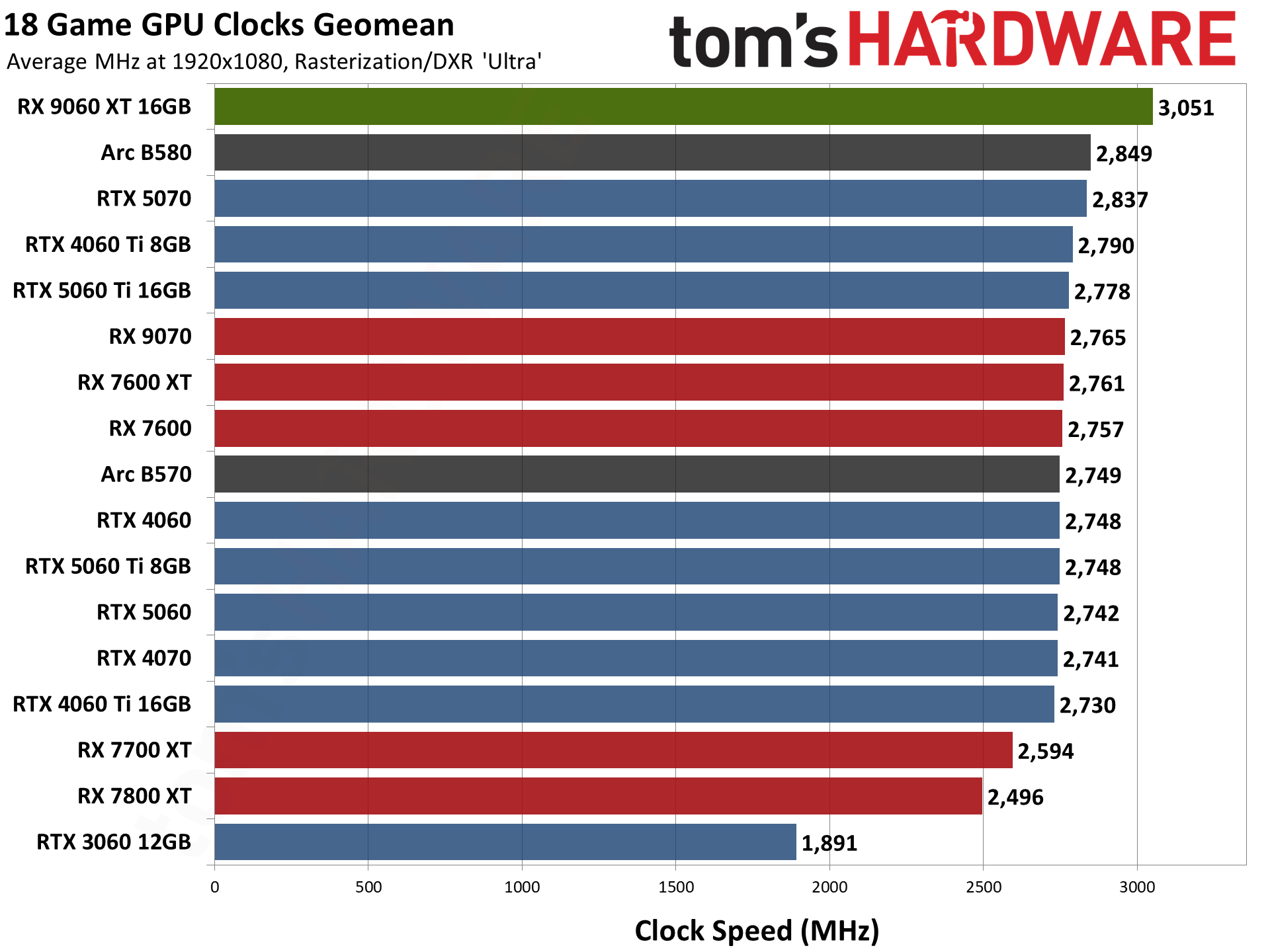
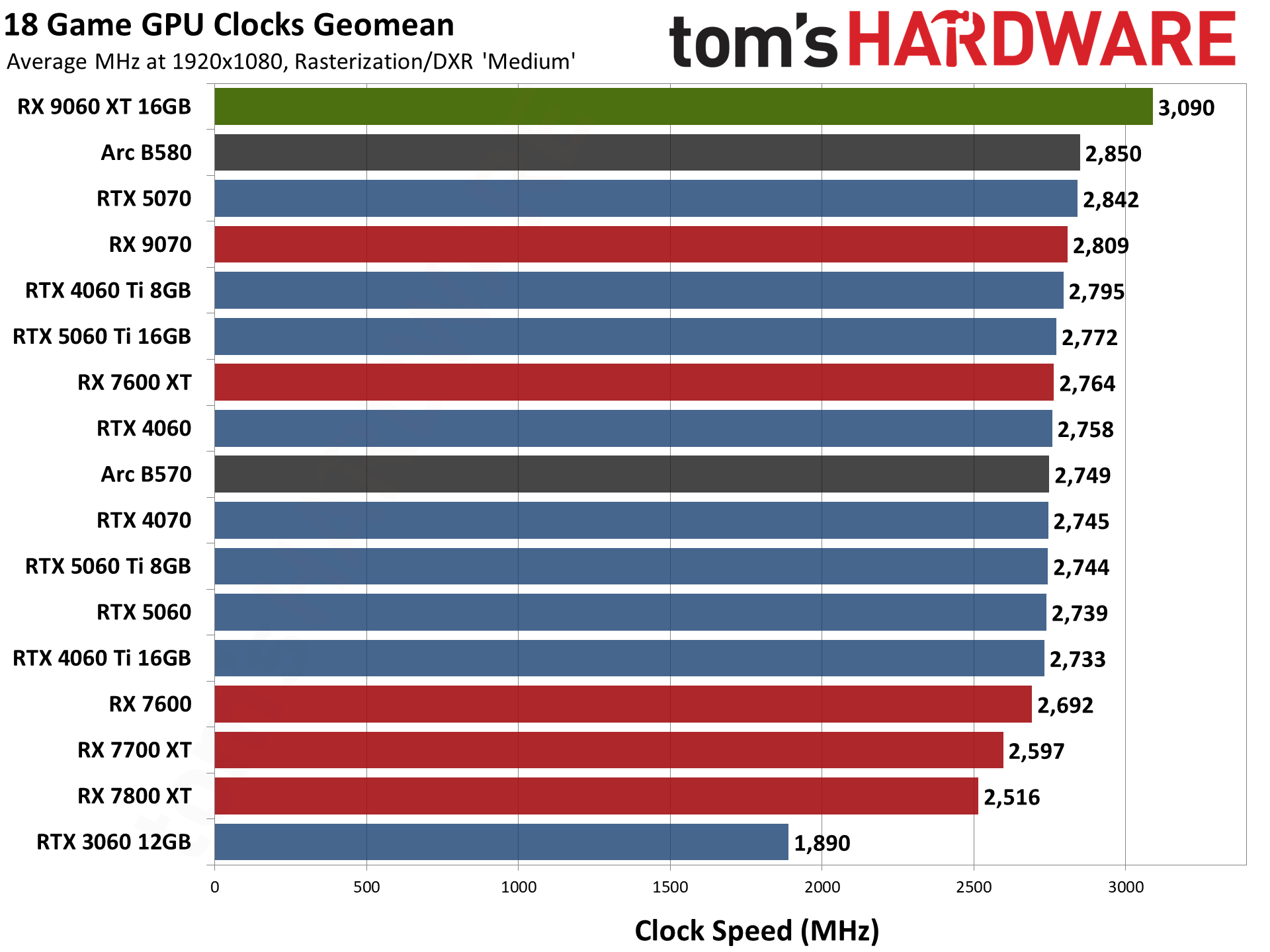
Clock speeds among the different GPUs and architectures aren't super important, but it's still interesting to see where things land. The PowerColor card does have a slight overclock relative to AMD’s reference specifications, but the Game Clock and Boost Clock discrepancies muddy the waters.
The 9060 XT never quite hits the maximum boost clock, but it’s also well above the supposed 2620 MHz Game Clock. Average clocks decrease as we increase the settings as well, so 1080p manages 3090 MHz while 1080p ultra drops that to 3050 MHz, and then the GPU drops below 3000 MHz at 1440p, and 4K hits 2900 MHz. Compared to Nvidia’s RTX 5060 Ti GPUs, that’s anywhere from a 350 MHz advantage to a 120 MHz advantage.
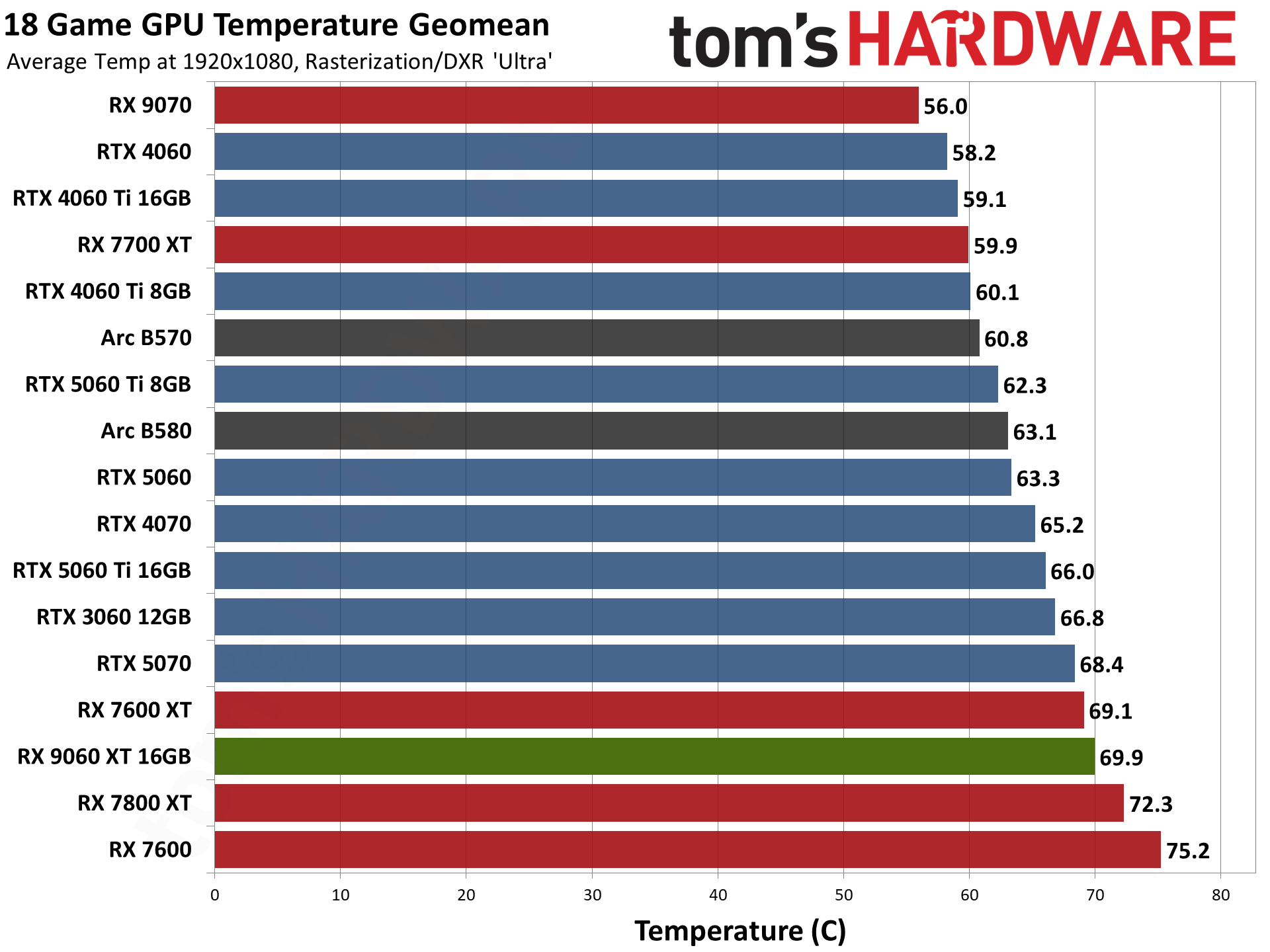
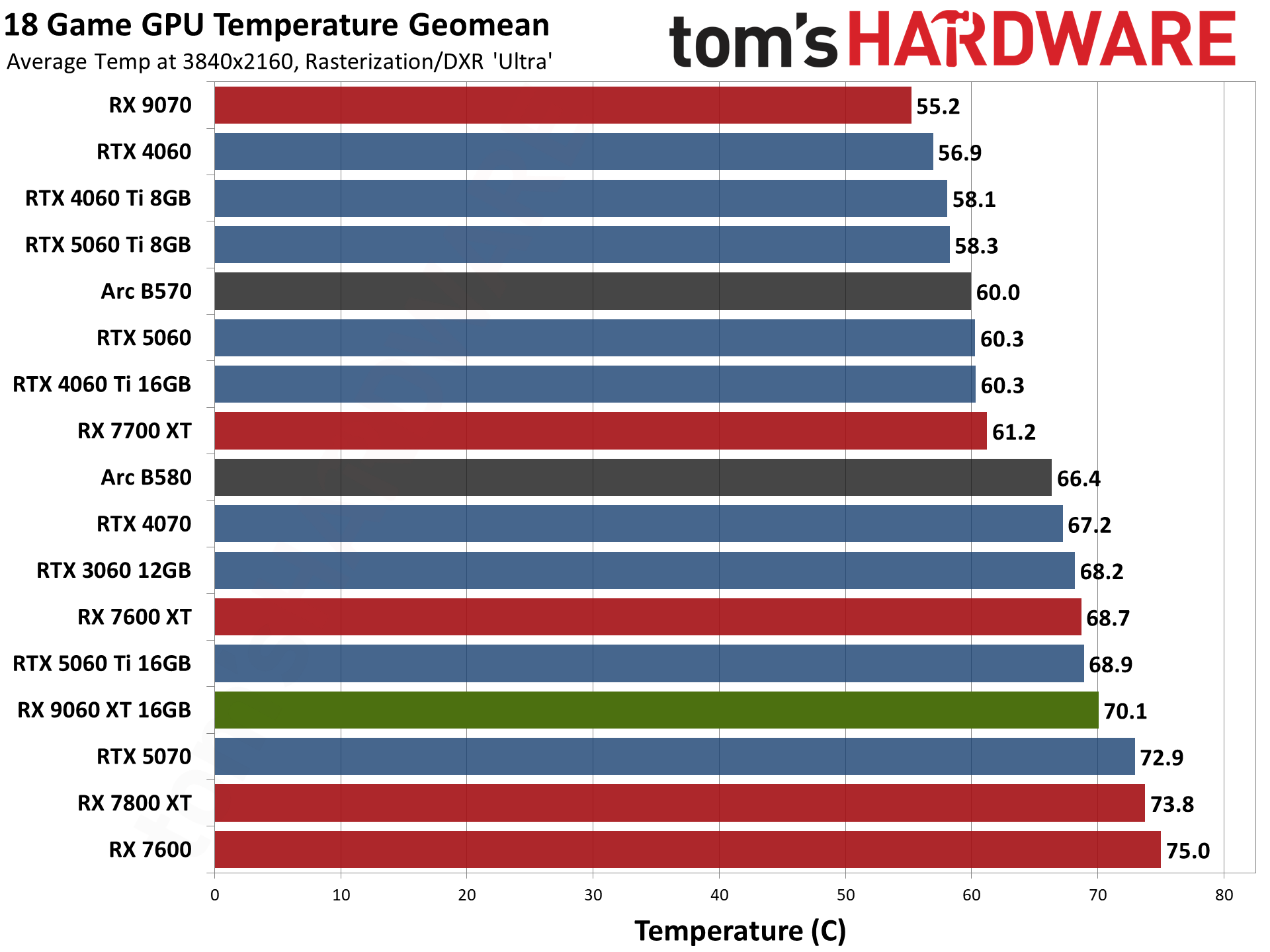

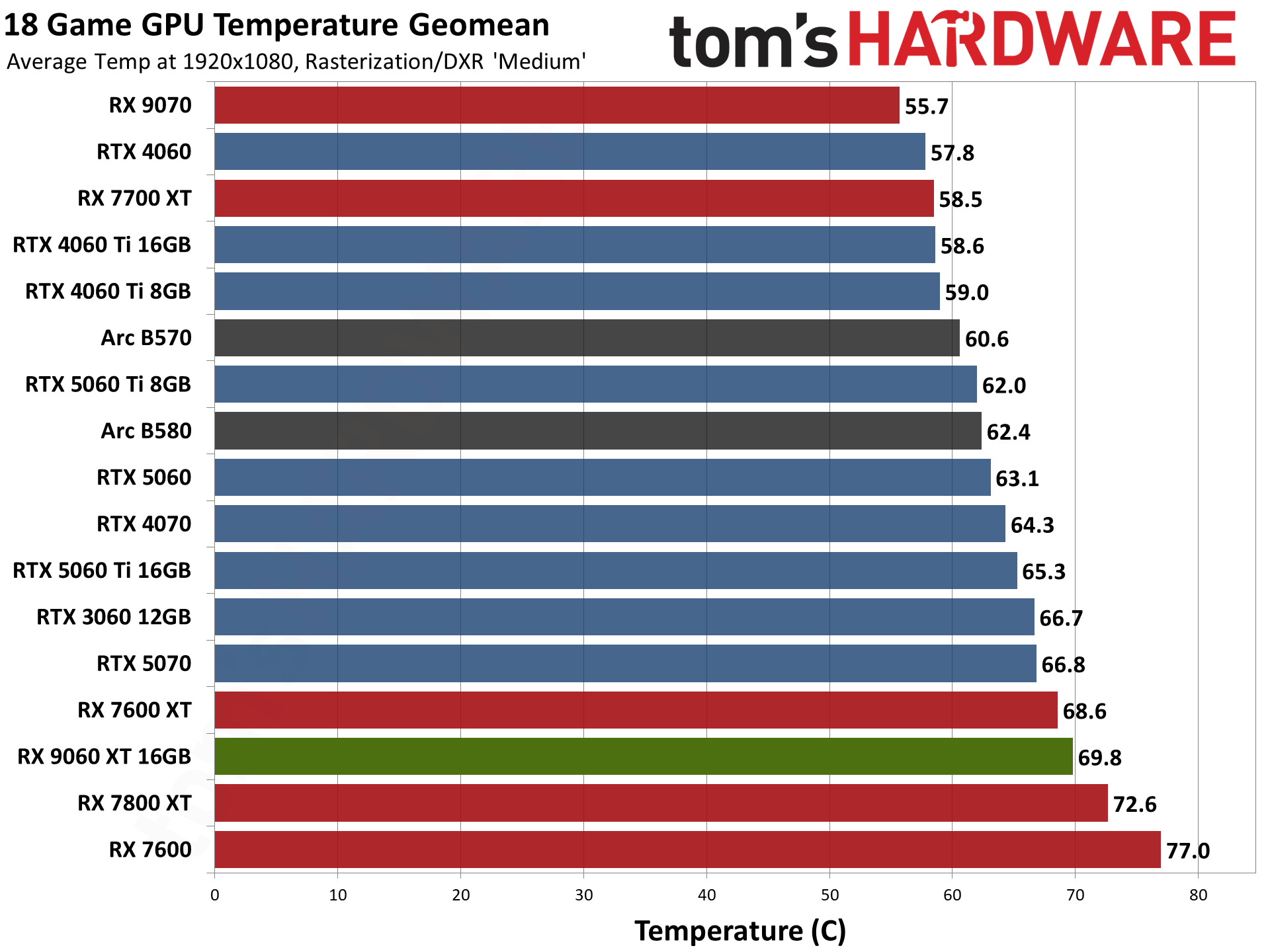
Like the clock speeds, comparing GPU temperatures without considering other aspects of the cards doesn't make much sense. One card might run its fans at higher RPMs, generating more noise while being "cooler." So these graphs should be used alongside the noise and performance results. The PowerColor card consistently lands at about 70C, give or take 1C. While that’s not a “hot” card by any stretch, it’s generally running warmer than the RTX 5060 Ti cards. The closest Nvidia gets is with the 5060 Ti 16GB at 4K, where it’s only 1C cooler than the 9060 XT. But we also need to look at noise levels.

We check noise levels using an SPL (sound pressure level) meter placed 10cm from the card, with the mic aimed right at the center of one fan: the center fan if there are three fans, or the right fan for two fans. This helps minimize the impact of other noise sources, like the fans on the CPU cooler. The new noise floor of our test environment and equipment is around 34 dB(A), due to the noise from the CPU cooling pump. The PowerColor card generally does a good job at staying quiet. The larger triple-fan cards can beat it, but it comes in slightly below the noise level of the Asus RTX 5060 Dual, the PNY 5060 Ti 16GB, and the relatively poorly performing Gigabyte RTX 5060 Ti 8GB.
- MORE: Best Graphics Cards
- MORE: GPU Benchmarks and Hierarchy
- MORE: All Graphics Content
Get Tom's Hardware's best news and in-depth reviews, straight to your inbox.
Current page: AMD Radeon RX 9060 XT 16GB power, clocks, temps, and noise
Prev Page AMD Radeon RX 9060 XT 16GB content creation, professional apps, and AI Next Page AMD Radeon RX 9060 XT 16GB: plenty of VRAM and bang-for-the-buck, even at current pricesTom's Hardware is the leading destination for hardcore computer enthusiasts. We cover everything from processors to 3D printers, single-board computers, SSDs and high-end gaming rigs, empowering readers to make the most of the tech they love, keep up on the latest developments and buy the right gear. Our staff has more than 100 years of combined experience covering news, solving tech problems and reviewing components and systems.
-
thestryker While I still feel like there should have only been a single 9060 XT the 16GB is definitely what passes for as a good deal price v perf despite the upsell pricing. Hopefully over the lifetime of the card MSRP will be hit.Reply -
JamesJones44 Feels like if one is going to step up to a 16 GB model, the 5060 Ti looks like a better choice for $40 more. Otherwise one is just looking to save $90 by sticking with the 8 GB model.Reply -
Alvar "Miles" Udell AMD showing again why they don't care about gaining market share: they have a product that can compete with Nvidia, but they don't price it anywhere near what it would take to get people to buy it if they're already Nvidia users.Reply -
palladin9479 I was hoping to see a 9060 XT 16 vs 8 GB charts the same as the 5060 Ti has a way to see where the cutoff is instead of the misinformation that gets spread. It's also entirely what the market cost is gonna be at.Reply -
virgult Reply
That's because it cannot compete. It's a bit worse, for a bit more power, if you're a gamer. Non-gaming workloads run abysmally bad compared to Nvidia, due to AMD's neglect of HIP, ROCm, and any effort to make pro workloads run well.Alvar Miles Udell said:AMD showing again why they don't care about gaining market share: they have a product that can compete with Nvidia, but they don't price it anywhere near what it would take to get people to buy it if they're already Nvidia users.
This is not a competitive product, that's why it should be priced way lower. -
tvargek but don't forget 5060ti has lower performance on older MB's cause of narrow lanes and all those hoping to upgrade their older system with 5060 series should also buy new MB+CPU+MEM to gain full advantage of 5060tiReply -
palladin9479 Replytvargek said:but don't forget 5060ti has lower performance on older MB's cause of narrow lanes and all those hoping to upgrade their older system with 5060 series should also buy new MB+CPU+MEM to gain full advantage of 5060ti
Ehh that really depends. PCI-E bandwidth, which is what you are talking about, is only involved when data gets transmitted from system RAM to GPU VRAM. When you have plenty of VRAM then you really don't need to worry about that, if you are in a VRAM constrained situation which requires graphics resources to be swaped in and out of system RAM across the PCIe bus. PCIe 4 x16 slot is 32GB/s one way, PCIe 5.0 x16 is 64GB/s one way. System memory is much faster and therefor not the bottleneck. Honestly if someone is in such a situation that are you swaping texture data across the PCIe bus, they are already having a bad experience and need to either turn down texture resolution or upgrade to a newer card. -
GravtheGeek I had no problem getting the XFX model of the 16 gig for MSRP ($350) via newegg. Lots of $350 models out there. If you live near a Microcenter it's even better selection.Reply
One major thing to note about the powercolor reaper: it's only 200mm x 39mm for a 16 gb version. That makes it one of the best cards for some smaller SFF builds out there for the money.
